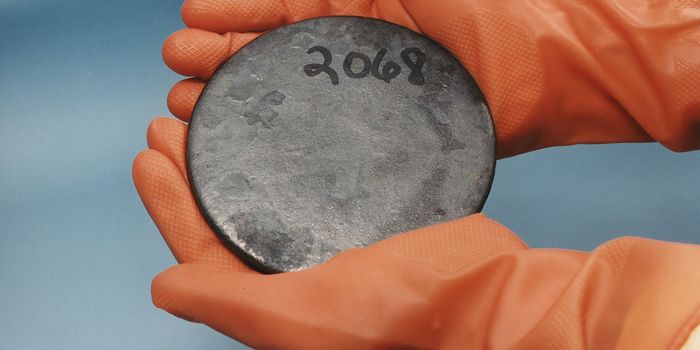Engineers Use Lasers to Control "Qubits"
Diagram illustrating how two laser beams of varying wavelengths can affect electric fields surrounding an atomic nucleus, which results in the nucleus spinning in a specific direction. (Credit: Haowei Xu, Ju Li and Paola Cappellaro, et. al; Creative Commons Attribution Non-Commercial No Derivatives license)
In a recent study published in Physical Review X, a team of researchers from the Massachusetts Institute of Technology (MIT) have examined a theoretical concept for using lasers for both creating and controlling what are known as “qubits”, which are the quantum twins of digital bits. This study holds the potential to advance the development of quantum-based devices, including quantum computers and quantum sensors.
While quantum systems could potentially use nuclear spins and photons as building blocks, getting both to cooperate has been found to be quite the endeavor, primarily because photons and atomic nuclei rarely interconnect since their natural frequencies vary between six and nine orders of magnitude, essentially a difference in one thousand.
“We have found a novel, powerful way to interface nuclear spins with optical photons from lasers,” Dr. Paolo Cappellaro, who is a professor of nuclear science and engineering at MIT and a co-author on the study, said in a statement. “This novel coupling mechanism enables their control and measurement, which now makes using nuclear spins as qubits a much more promising endeavor.”
For the study, the researchers discuss using light to alter a nucleus’ state using the electric quadrupole of the nucleus, which could result in an interaction between the quadrupole and the environment. This differs from previous studies that attempted to use light to affect nuclear spins. These ended up with indirect results since the entire nucleus was affected through magnetic interactions because the light coupled with the electron spins around the nucleus instead of the nucleus itself.
“Nuclear spin is usually pretty weakly interacting,” Dr. Ju Li, who is a professor of materials science and engineering at MIT and a co-author on the study, said in a statement. “But by using the fact that some nuclei have an electric quadrupole, we can induce this second-order, nonlinear optical effect that directly couples to the nuclear spin, without any intermediate electron spins. This allows us to directly manipulate the nuclear spin.”
While the concept remains theoretical, the next phase would be to apply it to a laboratory setting, most likely first using a spectroscopic system.
“This may be a good candidate for the proof-of-principle experiment,” Haowei Xu, who is a PhD student at MIT and lead author of the study, said in a statement. Xu also noted that once this proof-of-principle experiment is complete, the researchers could then address memory or transduction effects, which are types of quantum devices.
Sources: Physical Review X, MIT News
As always, keep doing science & keep looking up!









